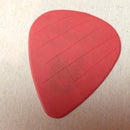Introduction: Home Made Utility Vehicle A.K.A UTV
I had no master plan, I just designed as I went. I also wasted quite a bit of time on parts that I ended up not using. The first mistake was trying to adapt a vertical lawn mower engine to horizontal (don’t waste your time).
A few major components and links:
Engine:
Transaxle:
https://www.surpluscenter.com/item.asp?item=13-1468&catname=powerTrans
Gas tank:
https://www.surpluscenter.com/item.asp?item=28-1648-A&catname=powerTrans
Warning: Welding can be dangerous. I recommend taking a class if you do not know how.
Step 1: The Start
The first thing I bought to get started was a $50 ATV from craigslist that was missing an engine. I stripped everything from the frame and with an angle grinder cut it in half.
My brother has a Polaris Ranger that I got most of the dimensions from. I first determined the wheel base and extended my frame to match ( more or less).
The next part of this project I bought 1 1/4” square tubing to create a frame for the seat and floorboards.
Next I had to extend the width of the original ATV so I cut off the shock mounts about 4” from the shock. I fabricated an extension plate to match the u-shape of the shock mount then welded both top and bottom of the seam to really reinforce this high stress area. With 1” square tubing I built out the frame and welded on bolt tabs for the swing arms.
Step 2: Roll Bars, Dash Board, Steering and the Bed.
To prepare for the roll bars I made a frame with 1” square tubing for the firewall. I managed to get free 1 7/5” steel pipe that I used on the roll bars. I bought a pipe bender and bent modeling it after a Yamaha Rhino cage.
The Dash board I made from 3 treadmill reading racks welded together. For the steering I happened to be in the right place at the right time. My Brothers Polaris rack and pinion box broke and he gave it to me. The shaft was the only problem with it so I welded it together.
For the bed I cut a garden tractor cart in half and patched it in the middle with steel plate.
Step 3: Hood, Transaxle, Seat & Engine.
I got a Yamaha Rhino hood on ebay and it really started to look like something. I welded on mounts on the front to get the hood the correct height the I welded pins to latch the hood down with a cotter pin.
I had been wanting to buy a Dana transaxle for some time and finally could afford it. I cut the rear off from the back of the seat and made a swing arm out of 1 7/5" pipe to bolt it to. I used double shocks on both sides similar to the design from a American Sport works UTV. I made a rigid frame on top welded to the back of the seat.
The Seats are made of 5/8" plywood and 3 layers of carpet padding then covered in black vinyl material. Thanks to my sisters awesome sewing skills they look great.
I bought a 13 horse power (390cc) engine from Harbor Freight and found a 500 series comet clutch to drive the transaxle. I had to mount a jack-shaft on the rear pulley and run a chain to the transaxle because I did not have enough clearance to mount the engine on the rear swing arm (American sport works does this).
Jack-shaft details: The Comet 500 Series Clutch Drive pulley is mounted on the engine shaft, The driven pulley I have mounted to a keyed jackshaft just behind the engine. The distance was determined by my belt length. The most difficult part of this process was allowing for forward and backward movement to assure proper belt tension and the ability to make the comet pulleys parallel. The Jack-shaft starts with the driven pulley then a locking collar to keep the driven clutch from moving then another locking collar, sprocket followed by another locking collar. I then have two pillow block bearings spaced a few inches apart. The sprockets used are the same for the jack-shaft and the input shaft on the transaxle (1:1).
Step 4: Future Plans
There is a lot of cosmetic things that I need to finish to make the UTV look a bit more polished. I have already started to shroud under the seat with PVC panel and plastic fasteners. The sides behind the wheel wells I am thinking of using fiberglass to continue the contour from the Rhino wheel well.
The machine is a bit noisy! Especially the bed. I plan to paint with something like Rhino lining to help muffle the steel rattling.
The Transaxle has a shaft for four wheel drive. I may run a shaft up to the front and replace the hubs and add a differential.
All in all the machine works great for yard-work. I managed to get it up to 20-mph. I little bigger engine would be nice.
I left out a bunch of things on this instructable. If you have any questions let me know.











